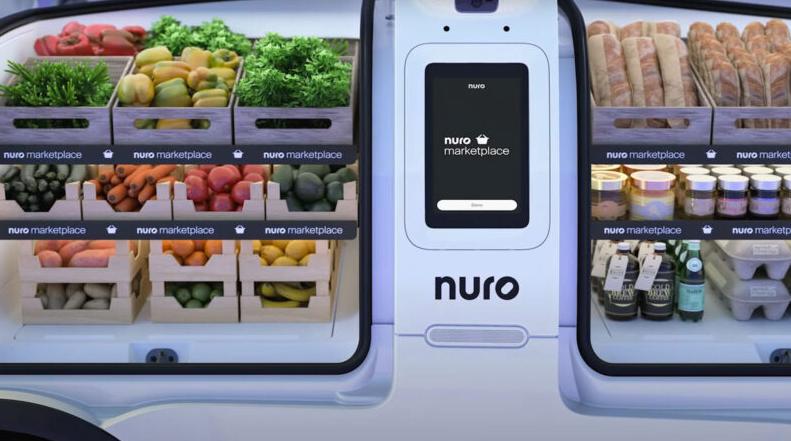Uber's Next Big Move: 20,000 Robotaxis by 2030
Uber is accelerating its efforts to deploy a large-scale autonomous vehicle fleet. The company has announced a partnership with two major players—Lucid Motors and Nuro—to roll out more than 20,000 Robotaxis in the United States over the next six years.
The initiative marks a significant shift in Uber’s strategy: instead of developing its own hardware and software, Uber is turning to trusted specialists. Lucid will supply the vehicle platform, while Nuro will provide Level 4 (L4) autonomous driving technology.
These vehicles are expected to begin limited deployment in 2026, with Uber serving as the exclusive platform provider. The Robotaxis will be either owned by Uber directly or by fleet management partners authorized by the company.

The Technology Stack: Lucid's Hardware Meets Nuro's Software
The vehicles for this project are based on the Lucid Gravity SUV, a high-end electric vehicle capable of 450 miles (724 km) on a single charge. The vehicle supports 926V fast charging, offering around 200 miles (322 km) of range in just 12 minutes. It is also compatible with Tesla Superchargers without the need for adapters.
The base Gravity model starts at $79,900—significantly higher than other Robotaxi platforms like Baidu's Apollo Go or Tesla’s rumored next-gen Model Y. Factoring in the additional autonomous hardware, Uber’s Robotaxi rides may be positioned as premium services—likely comparable to Uber Black.
On the software side, Nuro will deliver its fourth-generation autonomous driving system, "Nuro Driver," powered by NVIDIA’s Thor chip and Arm’s Neoverse platform. The company will lead safety validation across numerous testing scenarios using simulation, closed-course testing, and supervised real-world deployments.

Why Uber Is Betting Big on Nuro
While Lucid will receive a $300 million investment from Uber, Nuro is reportedly getting an even larger amount. Uber has also secured a seat on Nuro’s board, signaling deep strategic alignment.
Nuro is no stranger to autonomy. Founded by two ex-Google engineers, the company originally focused on driverless last-mile delivery robots like the R1 and R2, which gained regulatory approval to operate without steering wheels or side mirrors. At its peak, Nuro had partnerships with Domino’s, Kroger, and CVS.
However, economic headwinds and rising operational costs pushed the company to pivot. Nuro now focuses on licensing its L4 autonomous driving systems to automakers and logistics providers—an asset-light strategy that reduces risk while broadening its market.
A Validated, Scalable Business Model
Nuro’s pivot is paying off. The company recently raised $106 million in a new funding round—its first since 2021. This fresh capital will support its transformation from a last-mile delivery startup into a major L4 software provider.
Uber and Nuro's partnership is a blueprint for future B2B autonomous vehicle deals. Nuro has already accumulated over 1 million miles of driverless operations across California and Texas, with a spotless safety record. This proven performance was likely a key factor in Uber’s decision to make a substantial investment.
Additionally, Nuro is actively in talks with other OEMs to license its Nuro Driver software for private vehicles, opening the door for future consumer-facing applications beyond ride-hailing.

Uber's Global Robotaxi Strategy: Why Nuro Matters
Uber’s Robotaxi ambitions go beyond Nuro. The company has already formed partnerships with major autonomous driving companies including Waymo, Aurora, and three Chinese AV leaders: Apollo Go (Baidu), Pony.ai, and WeRide.
The inclusion of Nuro brings unique advantages: mature L4 software, a proven safety track record, and a readiness to scale. This partnership aligns Uber with a flexible, battle-tested technology stack that could quickly adapt to changing market needs.
As the U.S. autonomous vehicle landscape heats up—with Tesla and Waymo expanding services in Austin—Uber is positioning itself as a global aggregator of best-in-class Robotaxi providers. The goal? Become the dominant platform for autonomous mobility, just as it did with human-driven ridesharing.
Final Thoughts: Uber’s Robotaxi Future Is Taking Shape
With this partnership, Uber is moving from being a passive observer to an active orchestrator in the Robotaxi ecosystem. Nuro brings in the technology, Lucid the luxury hardware, and Uber the global platform and user base.
By outsourcing complexity to top-tier partners and doubling down on high-performance technology, Uber’s Robotaxi fleet may not just compete—it could lead.
The question now is not whether Uber will launch autonomous vehicles, but when and at what scale.
Categories: vehicles
